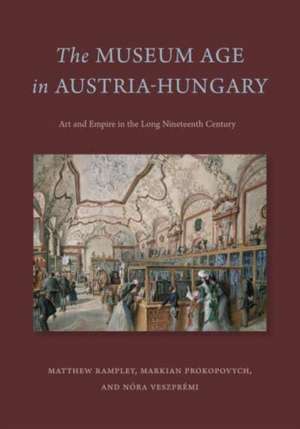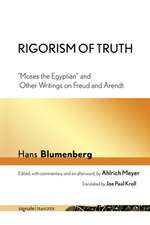The Museum Age in Austria–Hungary – Art and Empire in the Long Nineteenth Century
Autor Matthew Rampley, Markian Prokopovych, Nóra Veszprémien Limba Engleză Paperback – 20 feb 2023
| Toate formatele și edițiile | Preț | Express |
|---|---|---|
| Paperback (1) | 234.31 lei 3-5 săpt. | +23.24 lei 6-12 zile |
| Penn State University – 20 feb 2023 | 234.31 lei 3-5 săpt. | +23.24 lei 6-12 zile |
| Hardback (1) | 566.19 lei 6-8 săpt. | |
| Penn State University – 14 feb 2021 | 566.19 lei 6-8 săpt. |
Preț: 234.31 lei
Preț vechi: 285.74 lei
-18% Nou
44.85€ • 48.23$ • 37.38£
Carte disponibilă
Livrare economică 29 noiembrie-13 decembrie
Livrare express 14-20 noiembrie pentru 33.23 lei
Specificații
ISBN-10: 0271087110
Pagini: 300
Ilustrații: 47 Halftones, black and white
Dimensiuni: 178 x 253 x 25 mm
Greutate: 0.53 kg
Editura: Penn State University
Descriere
This important critical study of the history of public art museums in Austria-Hungary explores their place in the wider history of European museums and collecting, their role as public institutions, and their involvement in the complex cultural politics of the Habsburg Empire. Focusing on institutions in Vienna, Cracow, Prague, Zagreb, and Budapest, The Museum Age in Austria-Hungary traces the evolution of museum culture over the long nineteenth century, from the 1784 installation of imperial art collections in the Belvedere Palace (as a gallery open to the public) to the dissolution of Austria-Hungary after the First World War. Drawing on source materials from across the empire, the authors reveal how the rise of museums and display was connected to growing tensions between the efforts of Viennese authorities to promote a cosmopolitan and multinational social, political, and cultural identity, on the one hand, and, on the other, the rights of national groups and cultures to self-expression.
They demonstrate the ways in which museum collecting policies, practices of display, and architecture engaged with these political agendas and how museums reflected and enabled shifting forms of civic identity, emerging forms of professional practice, the production of knowledge, and the changing composition of the public sphere. Original in its approach and sweeping in scope, this fascinating study of the museum age of Austria-Hungary will be welcomed by students and scholars interested in the cultural and art history of Central Europe.




